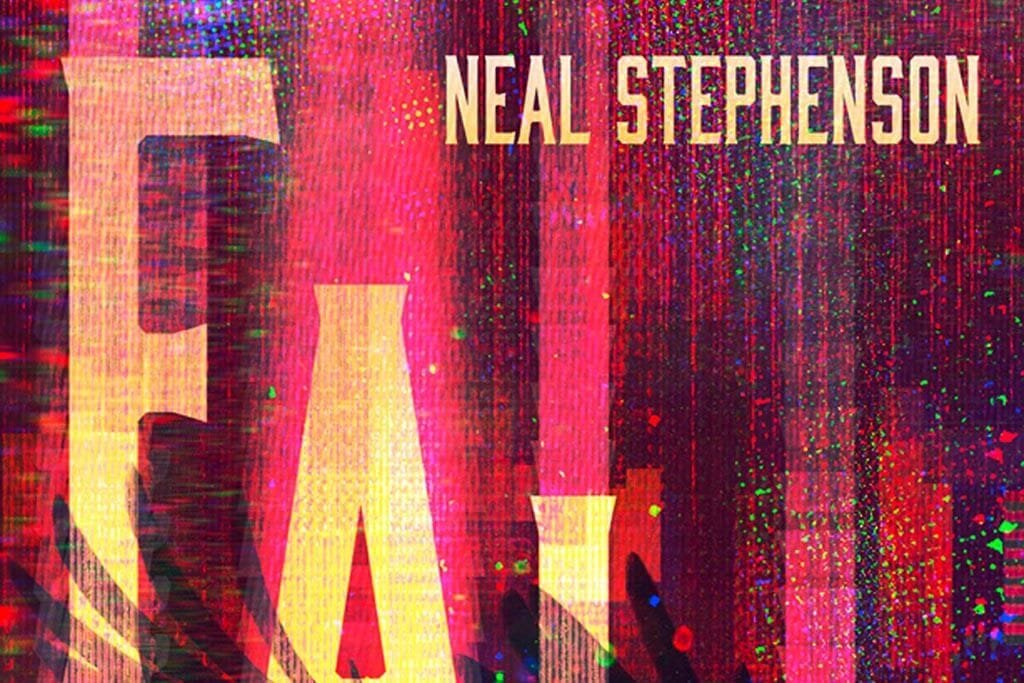Neal Stephenson’s Latest Book: Fall; or, Dodge in Hell

In its 880 pages, Neal Stephenson’s Fall; or, Dodge in Hell navigates many of the issues the science-fiction author has turn into identified for. The history, and future, of science. How data engenders energy, and the intention that energy perpetuates itself. How technologies that sound a long way-fetched are if reality be told inevitable, derived as they’re from a centuries-long direction of of incremental breakthroughs.
What’s outlandish to this budge-round is that Stephenson’s pet recommendations about our digital lives and afterlives overshadow his e book’s urgency. Almost 30 years ago, Stephenson envisioned the metaverse; in the beginning of Fall, he sees a culture cleaved in two, its divisions strengthened by AR-enabled filter bubbles. It be a pressing, plausible future—and one Stephenson somehow leaves unexamined.
Early in Fall, successfully off sport-studio founder Richard “Dodge” Forthrast dies. Principally. After a medical blueprint goes awry, his family discovers that Dodge’s will dictates he be cryogenically preserved. The e book unfolds from there: a viable brain-scanning technology emerges, and Dodge’s “connectome”—the stout array of his brain’s neural connections—gets scanned and saved. When his connectome stutters into digital wakefulness, it begins to shape a world around itself, giving upward thrust to what these in meatspace come to call Bitworld.
The uploaded thoughts is a successfully-loved trope in sci-fi, but it indubitably’s in general treated as a “hiya, humans can develop this now” sort of innovation. In Stephenson’s hands, that innovation is terribly mighty in growth. It stumbles from infancy into pubescence, with Bitworld (and its denizens) slowly gathering energy and constancy at some level of the e book till it turns correct into a loss of life-haven for these in an area to procure ample cash it. All that energy doesn’t come cheap. Running Bitworld requires quantum leaps in quantum computing, and the sphere delivery air slowly turns into the engine running Bitworld.
As does the e book. Fall spends an increasing number of of its time in Bitworld, watching its souls reshape the region in methods each archetypal and transgressive—till about halfway thru, when the yarn balance guidelines, changing correct into a fantasy unique a pair of quest interior the quiet-evolving Bitworld. Stephenson is going for one thing in this remaining third of the unique. Per chance it’s a repudiation of genre traces, exhibiting purists that sci-fi and fantasy aren’t so different in spite of all the things. Per chance it’s an ode to the power of collective storytelling, taking half in out how humans inevitably return to their non-public creation myths. In the sphere delivery air of Bitworld, minute of that issues—however the extra time spent in Bitworld, so too does that delivery air world topic much less and never more. In scared and spacing out these returns to meatspace, the e book begins to stall, and at remaining unravels.
What’s most disappointing about Fall‘s fall into its parallel prehistory is that it leaves a clear, extra pressing e book unwritten—one in which Stephenson wrestles with the chaotic fallout of this day’s social net. Dodge’s loss of life would possibly possibly just delivery the e book, but disinformation catalyzes it: a massive hoax that makes the sphere factor in a nuclear detonation has wiped out the puny city of Moab, Utah. The perpetrators pull off their assign-on with frightful ease, making contemporary election-season shenanigans appear love an innocuous appetizer. (Stephenson, who wrote mighty of that fragment of the e book sooner than 2016, has acknowledged he needed to scale mighty of it support as he “stumbled on that the future was as soon as methodology sooner than me.”)
Leaping ahead a dozen years or so, the reader finds that Moab has, if reality be told, turn into the flashpoint for what Stephenson elides as “the Facebooking” of The US. AR glasses are by now a frequent as these of us in the 2010s assumed they would possibly well be, turning in newsfeeds without delay to other folks’s eyes; however, unless which that you can procure ample cash a human editor otherwise you pool your cash with others to subscribe to a feed with decent AI filters, that feed is algorithmically determined to make your mind up you in what one persona calls a “personalized hallucination circulate”—one synced along with your pulse, how like a flash you blink, and other markers.
Now not surprisingly, the honor economy has mosey roughshod over concepts love verifiable reality. In Iowa shut to the Forthrast family dwelling, REMEMBER MOAB bumper stickers appear subsequent to Confederate flag stickers. Here is Ameristan, the place aside a Leviticus-literalizing Christian sect refers to Jesus as a “beta” and the Crucifixion as “a conspiracy by the elites to make your mind up other folks meek and passive.” (That explains why its people burn crosses whereas decrying “the KKK libel” and shoot someone who comes on their property wearing blended textiles.)
For 80 pages or so, Stephenson steeps us in this world, this aftermath. WhereSnow Crashimagined how humans would possibly possibly well spend digital actuality, here VR is almost nowhere to be considered, supplanted by the immediacy and ubiquity of an info-painted world—data which for an excellent deal of is a “torrent of porn, propaganda, and loss of life threats.” The imaginative and prescient is grim and unsettling and all too probably. It be the place aside you wish the author to take care of for a whereas, if most efficient to pose a solution that’s now not simply a topic of money. As a replacement, or now not it’s a stop on his motorway.
That motorway, in typical Stephenson model, involves a wealth of concepts that wait on flesh out the shut to future ofFall—the one delivery air of Bitworld, a minimum of. Robotic advancements wait on the elderly take care of healthy, and cell, a long way longer; AR wearables can emit a delicate-weight pattern meant to counter facial-recognition algorithms; blockchain technology enables for entirely anonymous, yet entirely verifiable, on-line process (though “on-line” is an ancient realizing, given how or now not it’s woven into the sphere). Acronyms abound—VEIL, PURDAH, ALISS—as develop chewy recommendations that Stephenson manages to render accessible.
There is mighty here to abilities. Whilst it falters,Fallis as mighty a ray of hope as it’s a warning. In the e book’s acknowledgments, Stephenson cites “diverse great-record conversations” with Jaron Lanier that influenced the unique. Lanier, the father of digital actuality who moved on to work in AR and grew to turn into an outspoken critic of social media, is a becoming spirit e-book for the unique, twinning Stephenson’s non-public scoot into techno-pessimism. He’s moreover an avatar of the e book’s non-public myopia: Had been he a persona, he’d surely be an early soul in Bitworld, his stature granting him passage and permanence. In the meantime, support in meatspace, the sphere burns on—one brain-deadening newsfeed at a time.
Whenever you occur to make your mind up one thing the spend of the retail links in our tales, we would possibly possibly just relish a puny affiliate price. Read extra about how this works.




